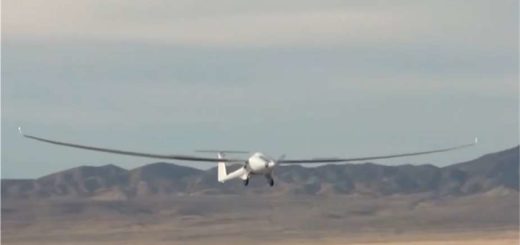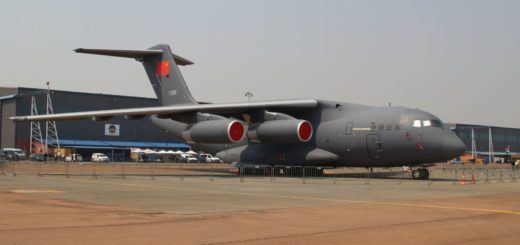Radia on how its giant WindRunner aircraft could boost defense in conflict zones
Defense logistics are growing ever more complex, especially in politically sensitive, hard-to-reach regions, due to factors like contested airspace, fragile supply chains, and limited infrastructure.
The challenge has been compounded by the shrinking pool of aircraft capable of carrying outsized cargo. The destruction of Antonov’s An-225 Mriya by Russian forces in Hostomel in 2022 has left a significant gap in heavy airlift capacity. Ukraine’s Antonov Airlines has re-established operations from Leipzig/Halle Airport in Germany, restoring some An-124 capacity and planning local maintenance support, but overall availability remains more limited than before 2022.
In January 2025, European manufacturer Airbus confirmed it would cease operations of its short-lived oversized cargo arm, Airbus Beluga Transport (AiBT), further reducing the options for transporting exceptionally large equipment.
As a result, militaries and humanitarian organizations face a growing gap in outsized airlift capabilities. The disappearance of such heavy-lift assets intensifies the logistical strain, demanding new solutions to meet the demands of modern, distributed operations.
Radia, a Boulder, Colorado-based aerospace company, is developing the WindRunner – set to become the world’s largest cargo aircraft by internal volume. With a wingspan similar to an Airbus A380 and an internal volume exceeding that of 12 Boeing 747s combined, the WindRunner is designed to deliver the largest items on Earth to remote or austere locations. According to its developer, it is also well-suited for tactical transport missions.
We spoke to Radia to find out more about the capabilities that enable WindRunner to operate in such demanding environments.
Outsizing the giants
In a conversation with AeroTime, the company’s CEO, Mark Lundstrom, noted that one of the aspects that makes the WindRunner unique is that no similar large cargo aircraft has been designed in decades.
The only similar capabilities are to be found in older models like the Lockheed C-5 Galaxy, the largest airlifter in the US Air Force. On the commercial side, Antonov Airlines continues to operate the An-124 platform from its relocated base in Leipzig/Halle. While these aircraft remain vital, they cannot fully close the gap left by shrinking global capacity, making a next-generation solution like the WindRunner strategically significant.
Radia claims the WindRunner will go far beyond what these legacy platforms can offer – in Lundstrom’s words, “much different, better, and bigger.” Measuring 356 feet (109 meters) in length with a 261-foot (80-meter) wingspan, it is designed to move cargo on a scale unmatched in the modern era, from six CH-47 Chinook helicopters with blades still attached to mobile radars, missile systems, satellites, and other oversized equipment, all without disassembly.
One of the WindRunner’s standout features is its ability to operate from shorter, unprepared airstrips, a feature rarely seen in aircraft of its scale. According to Lundstrom, the aircraft is able to touch down on short dirt strips, such as those found at wind farms or other harsh environments, as well as access smaller, less developed airports.
“We just need to get clearance at each airport that we land at to make sure that it can accommodate a wingspan this big. We can land the aircraft at most community airports in the world,” Lundstrom explained.
This capability could prove valuable in conflict zones or disaster areas where large runways are unavailable, enabling rapid delivery of outsized cargo in environments where traditional airlift options are limited.
Designed for defense scenarios
The WindRunner’s combination of volume, range, and landing flexibility positions it for multiple roles: defense, humanitarian relief, and heavy commercial cargo. For the military, it offers the ability to deliver large payloads rapidly into contested or infrastructure-poor areas, supporting both deterrence and operational mobility.
Radia CEO Mark Lundstrom (Credit: AeroTime)“Material rolls-on/rolls-off ready, enabling rapid mobilization and flexible deterrence for the most comprehensive operations related to defense, humanitarian aid, and commercial cargo,” Lundstrom said, adding that the company is “very focused on speaking to dual-use customers” in the aviation sector.
“We’ve been building the order book in three different categories – wind turbines, defense and heavy cargo,” Lundstrom said. “We do have commercial interest in each of those different areas, either at the contracting stage, the MOU, or Letter of Intent (LOI) stage.”
In May 2025, Radia entered into a Cooperative Research and Development Agreement (CRADA) with the US Department of Defense (DoD). According to the company, this agreement enables it and the DoD to evaluate how the WindRunner’s features can facilitate the transport of military cargo, as well as cater to the larger civil and military oversized cargo market.
Latest updates on the WindRunner project
Since 2024, the WindRunner program has achieved technical and supply-chain milestones. Key updates include a redesigned circular fuselage loft and an optional pressurized cargo bay.
Lundstrom said 70–80% of the supply chain is now secured, with many suppliers based in Europe, and that much of the aircraft’s hardware will be derived from mass-produced, proven components.
“We’ve gotten more and more components that are already in mass production that will be part of the aircraft,” he said.
Lundstrom added that, unlike conventional aircraft programs, the company intends to skip prototyping and go straight to making certification vehicles – this being possible because there isn’t much technical risk to mitigate, as the company is utilizing a lot of off-the-shelf technology and known processes.
“We’ve been working with the FAA on the project for about four years and so we’re well within the timelines of typical FAA approval processes,” Lundstrom said. “In fact, we hired one of the most senior executives at the FAA to run our certification program.”
The aircraft is expected to be delivered by the end of the decade. Lundstrom indicated that the company plans to operate the aircraft instead of selling it, and aims to provide that service by the end of 2030.
Developing a multi-mission platform
Lundstrom believes the WindRunner will fill a “huge gap in large airlift” across both military and civilian sectors. Beyond defense logistics, the aircraft could transport wind turbine components, and move oversized industrial equipment for global commerce.
“A single aircraft capable of meeting all these needs will be a very powerful contribution,” Lundstrom said.
RELATED
Meet WindRunner: The airplane set to become the largest aircraft ever built
The post Radia on how its giant WindRunner aircraft could boost defense in conflict zones appeared first on AeroTime.
Defense logistics are growing ever more complex, especially in politically sensitive, hard-to-reach regions, due to factors like contested…
The post Radia on how its giant WindRunner aircraft could boost defense in conflict zones appeared first on AeroTime.






